UPSC Exam > UPSC Notes > History for UPSC CSE > Spectrum Summary: V.P. Singh and Chandra Shekhar Governments (1989–1991)
Spectrum Summary: V.P. Singh and Chandra Shekhar Governments (1989–1991) | History for UPSC CSE PDF Download
V.P. Singh and Chandra Shekhar Governments (1989-1991)
- After the 1989 elections, the National Front lacked a majority in the Lok Sabha but asserted its ability to govern, with support from the BJP and Left parties , albeit indirectly.
- Vishwanath Pratap Singh became Prime Minister on December 2, 1989.
- Despite the initial lack of a parliamentary majority, the coalition gained control of both houses of Parliament following state legislative elections in March 1990.
- One of Singh's first actions was to recall the Indian Peacekeeping Force (IPKF) from Sri Lanka.
Kashmir Situation Worsens
- In December 1989, militants from the Jammu and Kashmir Liberation Front (JKLF) kidnapped the daughter of Union Home Minister Mufti Mohammad Sayeed .
- The Central government, succumbing to JKLF demands, released imprisoned militants.
- Hizb-ul Mujahideen , under Syed Salauddin , emerged as a leading militant group advocating for radical changes, including an Islamic regime.
- Militant activities surged, featuring armed bank assaults and grenade attacks on police stations.
- In response, the Central government deployed additional forces and appointed Jagmohan as the governor.
- Various incidents swayed public opinion in Kashmir towards supporting militants, with calls for 'Jihad' gaining prominence, highlighting the religious aspect of the militants' agenda.
- This wave of violence triggered a mass exodus of Pandits from the Kashmir Valley to Jammu and other regions, transforming them into refugees within their own country.
- Even today, many Pandits continue to reside in refugee camps, reluctant to return due to persistent fears and uncertainties.
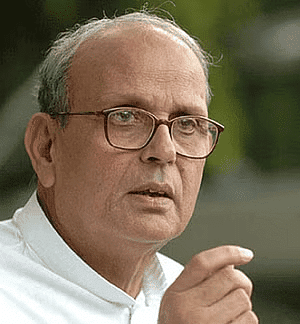
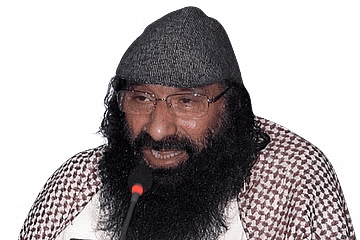
Question for Spectrum Summary: V.P. Singh and Chandra Shekhar Governments (1989–1991)Try yourself: Who was sworn in as the Prime Minister of India on December 2, 1989?View Solution
Question for Spectrum Summary: V.P. Singh and Chandra Shekhar Governments (1989–1991)Try yourself: What factor influenced the significant upswing in Congress's performance in the June phase of the 1991 elections?View Solution
Implementation of the Mandal Commission Report
- The Mandal Commission , established during the Janata Party's tenure, submitted its report in December 1980. However, the subsequent Congress governments led by Indira Gandhi and Rajiv Gandhi did not implement the recommendations.
- The commission emphasized the connection between caste and backwardness , pointing out the underrepresentation of Other Backward Castes (OBCs) in senior government positions. It recommended a 27% job reservation in the central government for OBCs, in addition to existing reservations for Scheduled Castes (SC) and Scheduled Tribes (ST) .
- The commission also proposed similar age relaxations for OBC candidates as those already available for SC/ST individuals.
Acceptance and Protests
- On August 7, 1990, V.P. Singh announced the acceptance of the Mandal Commission's recommendations to garner OBC support and strengthen the Janata Dal's coalition.
- This included implementing a 27% job reservation in the central government for socially and educationally backward classes.
- Following this announcement, significant protests erupted, particularly in North India , leading to instances of self-immolation and suicides among upper-caste youth who felt that competition for government jobs had intensified.
- In contrast, southern states, which already had reservation policies, were largely unaffected by these events.
- The Supreme Court initially suspended the order due to the protests.
- In November 1992, a nine-judge bench ruled 6-3 in favour of the reservation policy, although some judges advocated for criteria based on merit rather than caste.
- The court set conditions, stating that total reservations should not exceed 50% , and while caste criteria could be used for recruitment, their application might vary based on future legal interpretations and political circumstances.
- By the time of this ruling, political parties recognized the electoral significance of the OBC vote in northern India and accepted the reservation policy.
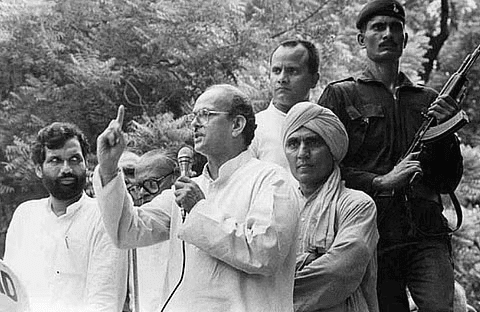
The Supreme Court and the Reservation Policy
- Initially, the Supreme Court put a hold on the order because of protests. However, in November 1992, a nine-judge bench ruled 6-3 in favour of the reservation policy . The judges who disagreed preferred criteria that were not based on caste. The court established some conditions:
- Total reservations should not exceed 50% .
- The caste criterion was restricted to recruitment only, not promotions.
- By the time of the court's decision, political parties had realized the electoral significance of the Other Backward Classes (OBC) factor in northern India and had accepted the reservation order.
From Mandal to Mandir: The Rath Yatra and the Fall of the Government
- The Bharatiya Janata Party (BJP) experienced internal disagreements regarding the Mandal Commission recommendations. Some members were concerned about the possible division of Hindu society, while others acknowledged the necessity of addressing the aspirations of the Other Backward Classes (OBCs) .
- To resolve this internal dispute, the BJP opted to shift its focus towards the Ram temple construction to unify Hindus. This change was exemplified by L.K. Advani leading the Ram Rath Yatra , which commenced in Somnath in September 1990, with the aim of concluding in Ayodhya after traversing various states. This yatra posed a significant challenge for Prime Minister V.P. Singh in terms of management and response.
Ram Rath Yatra, 1990
Key Events
- In Bihar, Chief Minister Lalu Prasad Yadav took measures to prevent L.K. Advani from bringing the Ram Rath Yatra to Ayodhya .
- As a result, Advani was arrested on charges of disturbing the peace and inciting communal tensions.
- During the yatra's passage through Bihar, Advani was placed under preventive detention in a guest house.
- After the yatra, significant disturbances occurred, particularly following the arrest of kar sevaks (volunteers for temple construction) in Uttar Pradesh.
- This led to violent confrontations between security forces and supporters of the temple project, escalating communal tensions.
- In response to these events, the Bharatiya Janata Party (BJP) withdrew its support from the National Front government.
- Prime Minister V.P. Singh resigned in November 1990 after losing a confidence vote in the Lok Sabha.
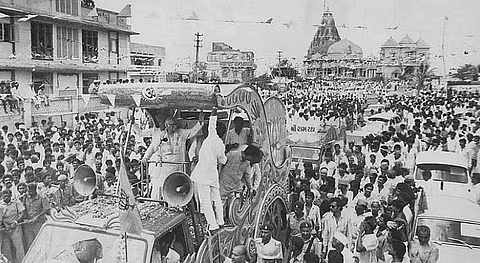
The Chandra Shekhar Government (November 1990 - June 1991)
- As the V.P. Singh government was on the verge of collapse, Chandra Shekhar , Devi Lal , and others decided to leave the Janata Dal , forming the Samajwadi Janata Party . The Congress agreed to support a minority government.
- With a modest 64 MPs , Chandra Shekhar took on the leadership role.
- Chandra Shekhar successfully navigated the political landscape, securing a crucial vote of confidence. On November 10, 1990 , he was sworn in as prime minister , marking a new phase in Indian politics .
Troubled Economy
- The economic situation deteriorated sharply, with a significant decline in foreign exchange reserves caused by fiscal imbalances and a heavy debt burden inherited from previous Congress-led governments.
- In January 1991 , Chandra Shekhar's government, under Finance Minister Yashwant Sinha , secured IMF approval for two loans, committing to implement economic reforms in exchange.
- During the February budget session, the Congress withdrew its support, hindering the minority government from presenting a complete budget.

Question for Spectrum Summary: V.P. Singh and Chandra Shekhar Governments (1989–1991)Try yourself: What was the main reason behind the mass exodus of Kashmiri Pandits from the Kashmir Valley?View Solution
Budget Session, 1991
- In January 1991, the government led by Chandra Shekhar, with Finance Minister Yashwant Sinha , received approval from the IMF for two loans, agreeing to implement economic reforms in exchange.
- During the budget session in February, Congress withdrew its support, preventing the minority government from presenting the full budget.
March Developments
- In March 1991, confronted with a severe foreign exchange crisis, the government proposed an unusual plan to pledge the country's gold reserves , involving confiscated gold.
- By mid-March, global credit-rating agencies had placed India under scrutiny, making it difficult to secure funds. The absence of a complete budget and a commitment to reforms hindered further financial support from multilateral institutions.
- Amid public criticism, caretaker Prime Minister Chandra Shekhar made the crucial decision to authorize the gold pledge to mitigate the liquidity crisis, a vital step for the balance of payments and future economic reforms.
- Chandra Shekhar's resignation in March 1991 led to the dissolution of the Lok Sabha, with President Venkataraman asking him to continue as caretaker prime minister until a new government was in place in June.
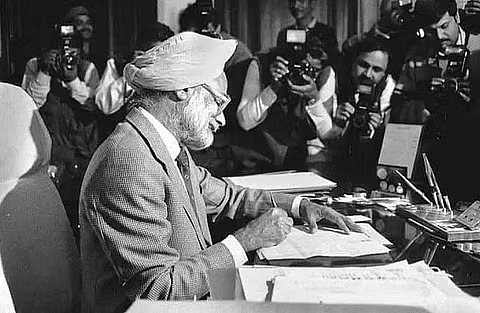
Elections of 1991
- The initial phase of the General Elections occurred in May 1991 but was overshadowed by a tragic event on the night of May 21—the assassination of Rajiv Gandhi.
- Following this incident, the next round of elections took place in June.
Election Results
- The election results revealed a significant contrast between the two phases.
- Prior to Rajiv Gandhi's assassination, the Congress party performed relatively poorly.
- However, in June, there was a remarkable surge in the Congress party's performance, indicating a strong wave of sympathy for them.
- Ultimately, Congress emerged as the largest party with 244 seats but did not secure a simple majority in the Lok Sabha.
- This outcome underscored the complex nature and impact of the tragic event on the electoral scenario.
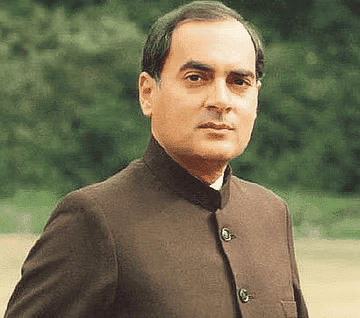
The document Spectrum Summary: V.P. Singh and Chandra Shekhar Governments (1989–1991) | History for UPSC CSE is a part of the UPSC Course History for UPSC CSE.
All you need of UPSC at this link: UPSC
|
216 videos|855 docs|219 tests
|
FAQs on Spectrum Summary: V.P. Singh and Chandra Shekhar Governments (1989–1991) - History for UPSC CSE
| 1. Who were V.P. Singh and Chandra Shekhar? |  |
V.P. Singh and Chandra Shekhar were prominent Indian politicians who served as Prime Ministers of India during the period of 1989-1991. V.P. Singh held office from December 1989 to November 1990, while Chandra Shekhar served as the Prime Minister from November 1990 to June 1991.
| 2. What were the major accomplishments of the V.P. Singh and Chandra Shekhar governments? |  |
The V.P. Singh government is known for implementing the Mandal Commission recommendations, which provided reservation quotas for Other Backward Classes (OBCs) in government jobs and educational institutions. This move had a significant impact on Indian politics and society. Chandra Shekhar's government, on the other hand, focused on stabilizing the political situation and addressing economic challenges, although it had a relatively short tenure.
| 3. How did the V.P. Singh and Chandra Shekhar governments change India's political landscape? |  |
The V.P. Singh government's implementation of the Mandal Commission recommendations brought about a significant shift in India's political landscape. It led to the emergence of new political alliances and realignments, with caste-based politics gaining prominence. Chandra Shekhar's government, although short-lived, played a role in stabilizing the political situation by providing a transitional phase between V.P. Singh's government and the subsequent governments.
| 4. What were the key challenges faced by the V.P. Singh and Chandra Shekhar governments? |  |
The V.P. Singh government faced major challenges such as widespread protests and opposition from certain sections of society against the implementation of reservations for OBCs. The government also had to tackle economic issues and address the growing demands of various interest groups. Chandra Shekhar's government, being a minority government, faced the challenge of maintaining stability and garnering support from different political parties.
| 5. What was the significance of the V.P. Singh and Chandra Shekhar governments in Indian history? |  |
The V.P. Singh and Chandra Shekhar governments played significant roles in shaping Indian politics and society during the late 1980s and early 1990s. V.P. Singh's government brought forth the issue of social justice and reservation policies, which had a long-lasting impact on Indian politics. Chandra Shekhar's government, though short-lived, contributed to the stability of the political landscape during a crucial period of transition. Both governments left a mark on India's political history and continue to be discussed and analyzed by scholars and political experts.
Related Searches





















